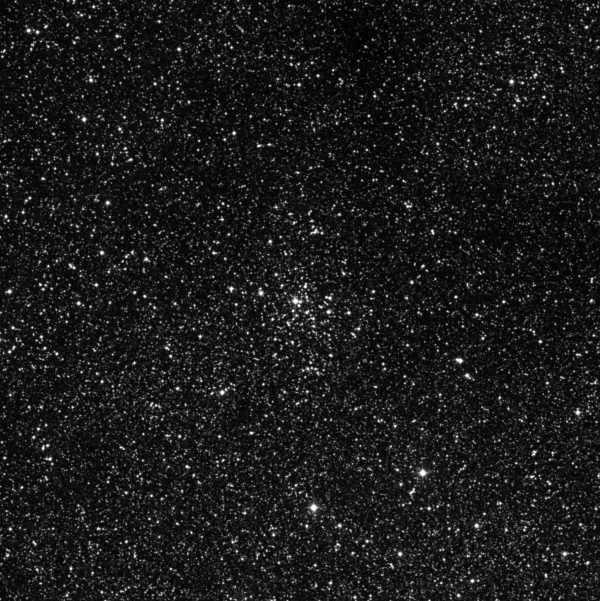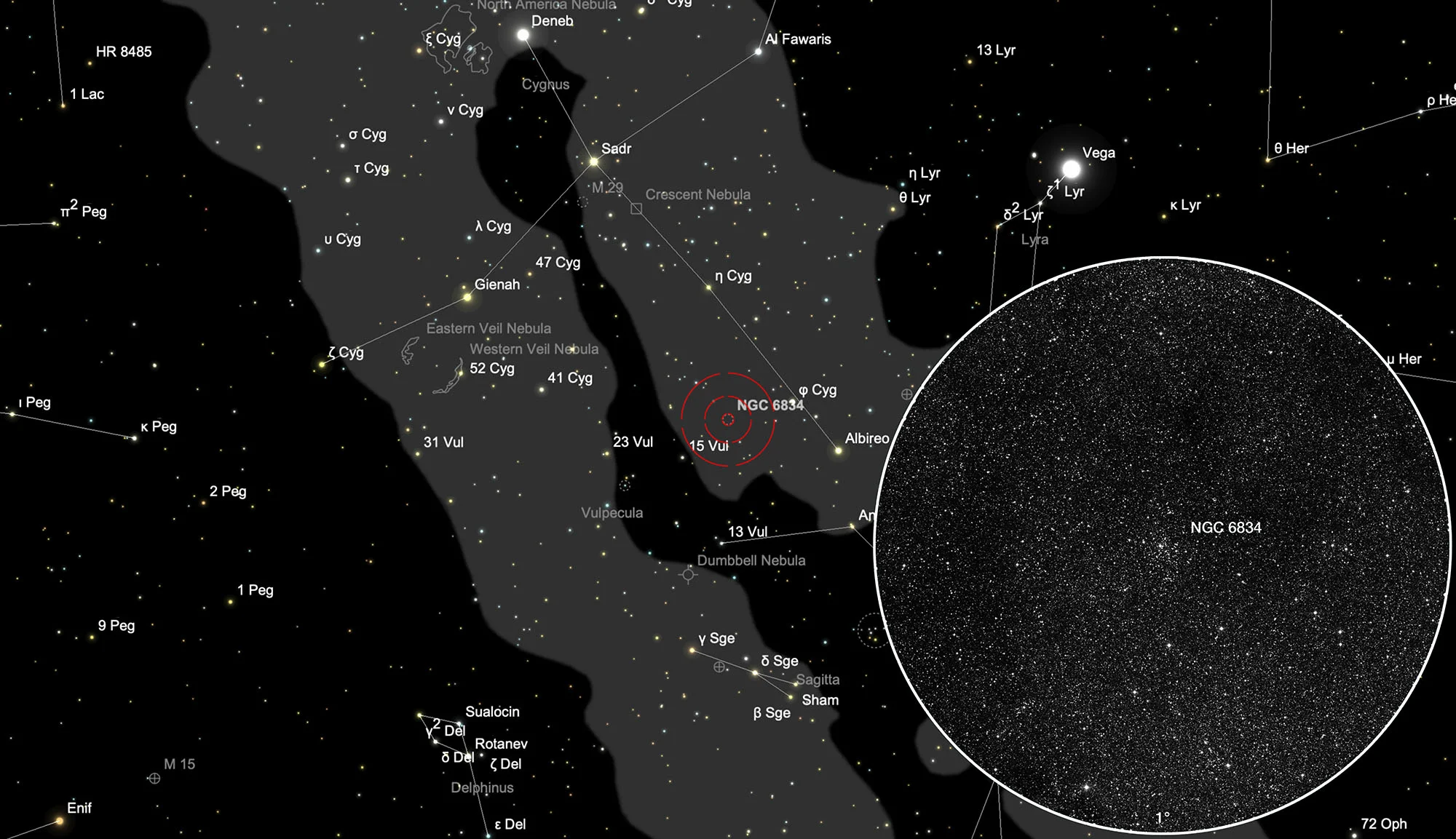Edge-On Cluster (NGC 6834)

Object Description
NGC 6834 is an Open Cluster with moderate star abundance and a slight concentration toward the centre. It belongs to the class D clusters, which stand out well from the environment. The age of this cluster is given as 79 million years and its distance as 7500 light years.
By the time Burnham's Celestial Handbook [4] and the Sky Atlas [18] went to press, this cluster had changed constellation: from Vulpecula in Burnham to Cygnus in virtually all other literature. This is probably more due to inaccurate position determination than to the transition from the 1950 epoch to J2000. The description in the Uranometria 2000 is decisive here.
| Designation | NGC 6834 |
| Type | OCL (II2m) |
| Right Ascension (J2000.0) | 19h 52m 12.5s |
| Declination (J2000.0) | +29° 24' 29" |
| Diameter | 6 arcmin |
| Visual magnitude | 7.8 mag |
| Metric Distance | 2.067 kpc |
| Dreyer Description | Cl, P, lC, st 11…12 |
| Identification, Remarks | WH VIII 16; h 2054; GC 4518; OCL 134 |
How to find NGC 6834?
Open star cluster NGC 6834 lies in the constellation Cygnus, 1 degree north and about 4.5 degrees east of Albireo and Beta Cygni respectively. That says it all for equatorially mounted telescopes. With a Dobsonian without a finder or Telrad you have to rely on star hopping. A chain of stars of 6th to 8th magnitude, which leads to the star cluster in a slight arc, helps here. Especially in moderate conditions, the magnification should not be too small, because the cluster is quite small. On 19 July it is in opposition to the Sun and crosses the meridian at local midnight.
Visual Observation
200 mm aperture: Actually, on this particular night, I was searching for planetary nebulae. I stumbled across this star cluster. In the wide-field eyepiece (about 20 mm for me, which corresponds to about 60x) it seemed strange to me - like a galaxy in an edge position, which is why I spontaneously gave it the name «Edge-On Cluster». The effect is created by a line of 5 stars dominating the cluster, with the middle star being the brightest. Around these stars are stars of the 11th and 12th magnitude. With increasing magnification, the effect disappears and you can see a nicely resolved cluster. Above and below this edge-on structure are two star clouds equidistant from the centre of the cluster.
450 mm aperture: Thanks to the higher light intensity of the 18-incher, the middle star of the chain of 5 now appears reddish. With a magnification of about 220x, the two star clouds are now well resolved - they each consist of 5-10 stars.
